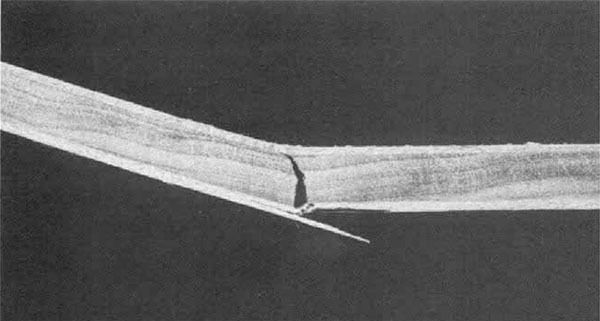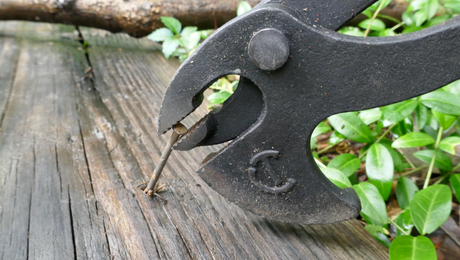
Synopsis: Tage Frid shares his knowledge of how to buy hardwood plywood — the different grades and qualities, and its advantages and disadvantages compared to solid wood. The ancient Egyptians used veneer, he says, and only the glues have modernized since then. Much plywood is made for the building industry, but he offers direction on how craftsmen can select good material and how to work it.
There is great confusion about how to buy hardwood plywood, about the different grades and qualities, and about its advantages and disadvantages against solid wood. Having a good knowledge of these things makes it easy to decide when to use plywood and when to use solid stock.
The advantage of plywood is that it’s more stable and won’t change its dimensions, except in thickness. It’s easier to make machine joints using veneer-core plywood because the alternating direction of the plies makes for about 50% long-grain to long-grain gluing surfaces. It would be impossible to make much modern furniture without plywood.
The advantage of solid wood is that it can be shaped and carved. Its color is usually darker and its figure more pronounced because it’s not cooked and steamed like veneer. The joints in solid-wood constructions can be exposed, making an attractive addition to the design. Solid-wood surfaces are also easier to repair, something to consider when making a piece that will receive lots of wear and possible abuse.
The greatest disadvantages of solid wood are that it doesn’t have much strength across its width, and its dimensions never stabilize—it’s always moving in width and thickness. The disadvantages of plywood are that it’s difficult to repair, its joints usually have to be hidden and its edges have to be faced with either veneer or strips of solid wood.
Many people talk about plywood and veneer as “that modern glued-up stuff.” Actually there’s nothing modern about it, except the glues used today. Veneering, the basis for plywood construction, was known to the Egyptians 3,500 years ago. The ancient Greeks and Romans used the technique also, but during the Middle Ages the technology was lost, and solid-wood furniture was joined with pegs rather than glue. In the 15th century the Italians rediscovered the technique of veneering and the art spread throughout Europe, reaching its climax of skill and artistry in 18th-century England and France.
From Fine Woodworking #23
For the full article, download the PDF below:
Fine Woodworking Recommended Products

Ridgid R4331 Planer

DeWalt 735X Planer

AnchorSeal Log and Lumber End-Grain Sealer





















Log in or create an account to post a comment.
Sign up Log in